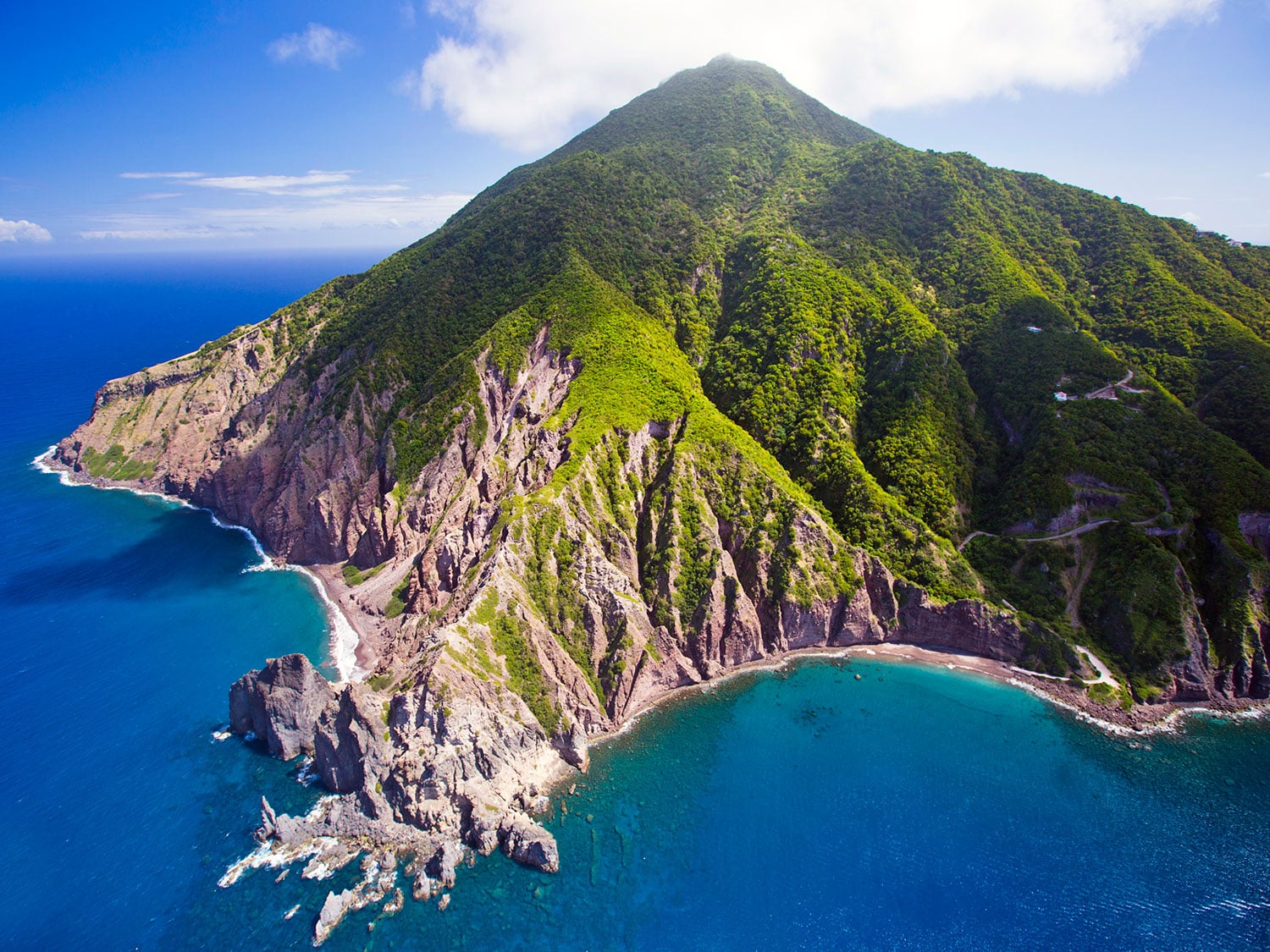A Different Kind Of Caribbean Awaits In Saba
Tiny but undeterred, The Unspoiled Queen emerges as an ideal destination for travelers who seek peace and adventure.
From the moment our puddle-jumper departs St. Maarten 14 minutes early—a feat almost unheard of when you're traveling in the Caribbean—it should have been obvious that my visit to Saba would be a decidedly different kind of island idyll.
On the 13-minute afternoon flight, we soar over calm cobalt seas punctuated with the white sails of boats. As the sun descends it transforms the water's surface into what looks like a rippling sheet of molten silver, and I'm transfixed by the scene. Then, moments later, rising straight above the surface like a lush, mist-cloaked Everest, Saba comes into view and steals my attention. Most people have never heard of this five-square-mile municipality of the Kingdom of the Netherlands (pop: 1,900). But my 16 fellow passengers have. And after the white-knuckle landing at Juancho E. Yrausquin Airport on what is, at 1,200 feet long, the world's shortest commercial runway, they unanimously applaud.
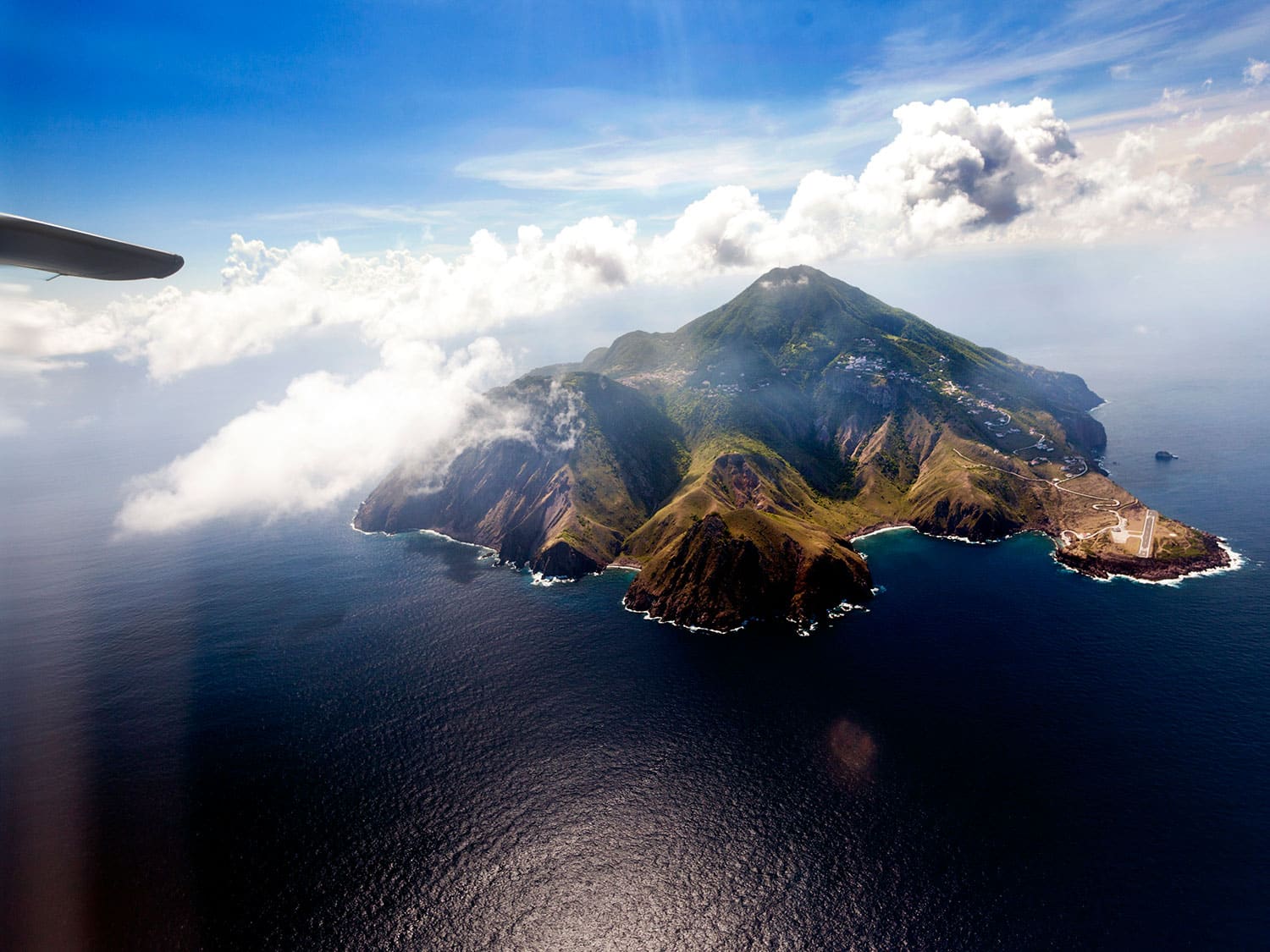
The first plane touched down on the island in 1959, preceded only a dozen years earlier by the first car. Before then, Sabans hoofed it or rode mules up the steep trails that crisscross the vertiginous island, the tip of a now-dormant underwater volcano born about 400,000 years ago. Locals love to tell the story of what's now known as the Road That Could Not Be Built, which winds upward from the harbor through Saba's capital, The Bottom, and, finally, to the airport on the northeastern side of the island.
Back in 1938, it would take Joseph "Lambee" Hassell 20 years to build it, a feat visiting Dutch engineers swore, because of the island's topography, was impossible. Undeterred, Lambee took a correspondence course in engineering, rallied a crew of local men to help, and two decades later the impossible road had become reality, built entirely by hand.
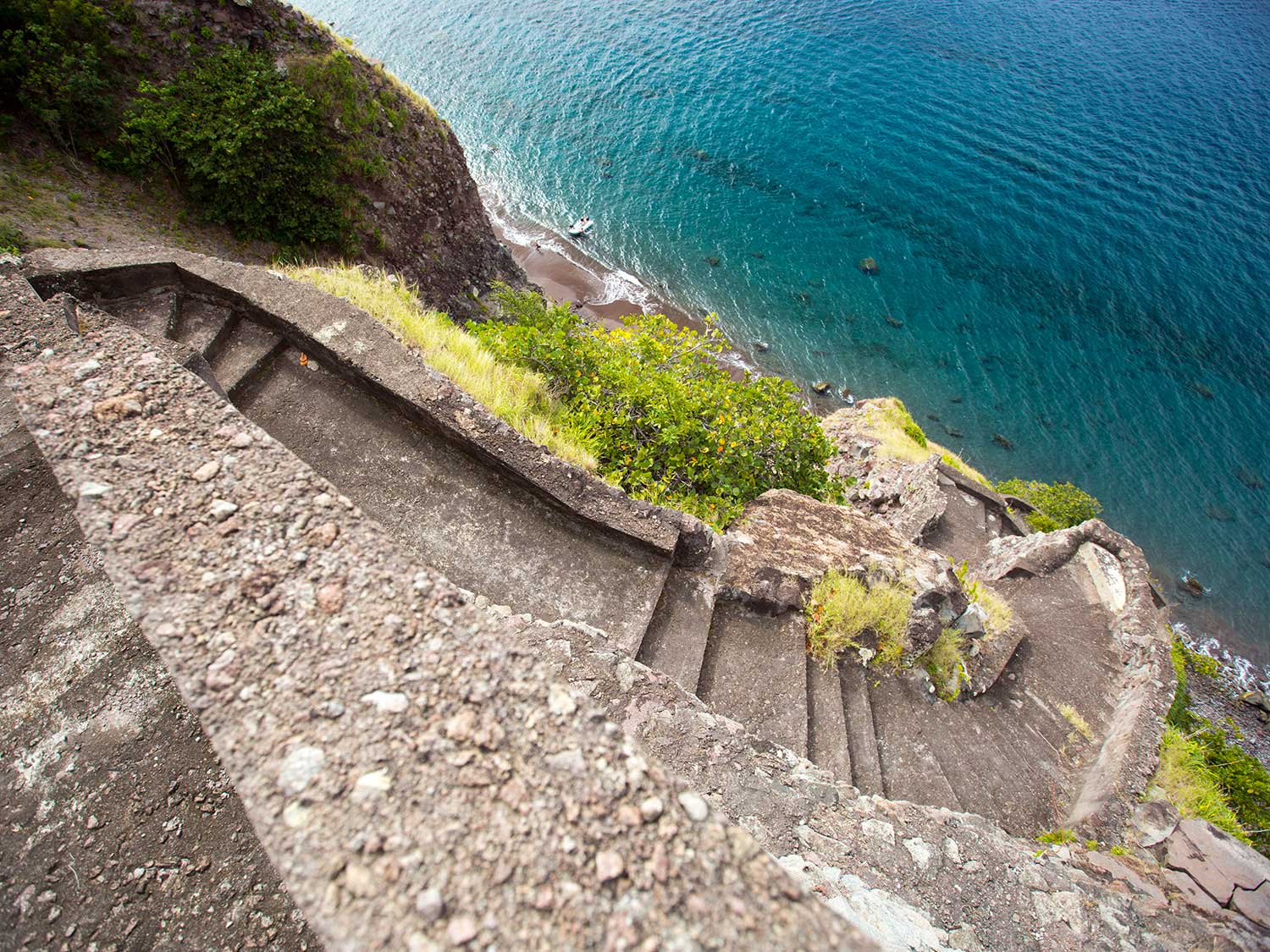
But my nail-biting arrival by air is only the first of many things about the island—which calls itself the Unspoiled Queen—that make it a Caribbean anomaly. At the tiny airport, there's no bustling transportation desk or scrum of taxi drivers touting for fares. Instead, I'm met by a welcoming woman named Lollipop ("Because I'm so sweet"), who expertly navigates the winding narrow road to Convent Cottage, the two-bedroom I'll be staying at in Windwardside, one of Saba's four villages. By the time we get there I've learned that Lollipop has two adult children who live abroad; that she used to work in the island's home for the elderly; owns seven taxis; and also runs a restaurant (Lollipop's, of course) in The Bottom.
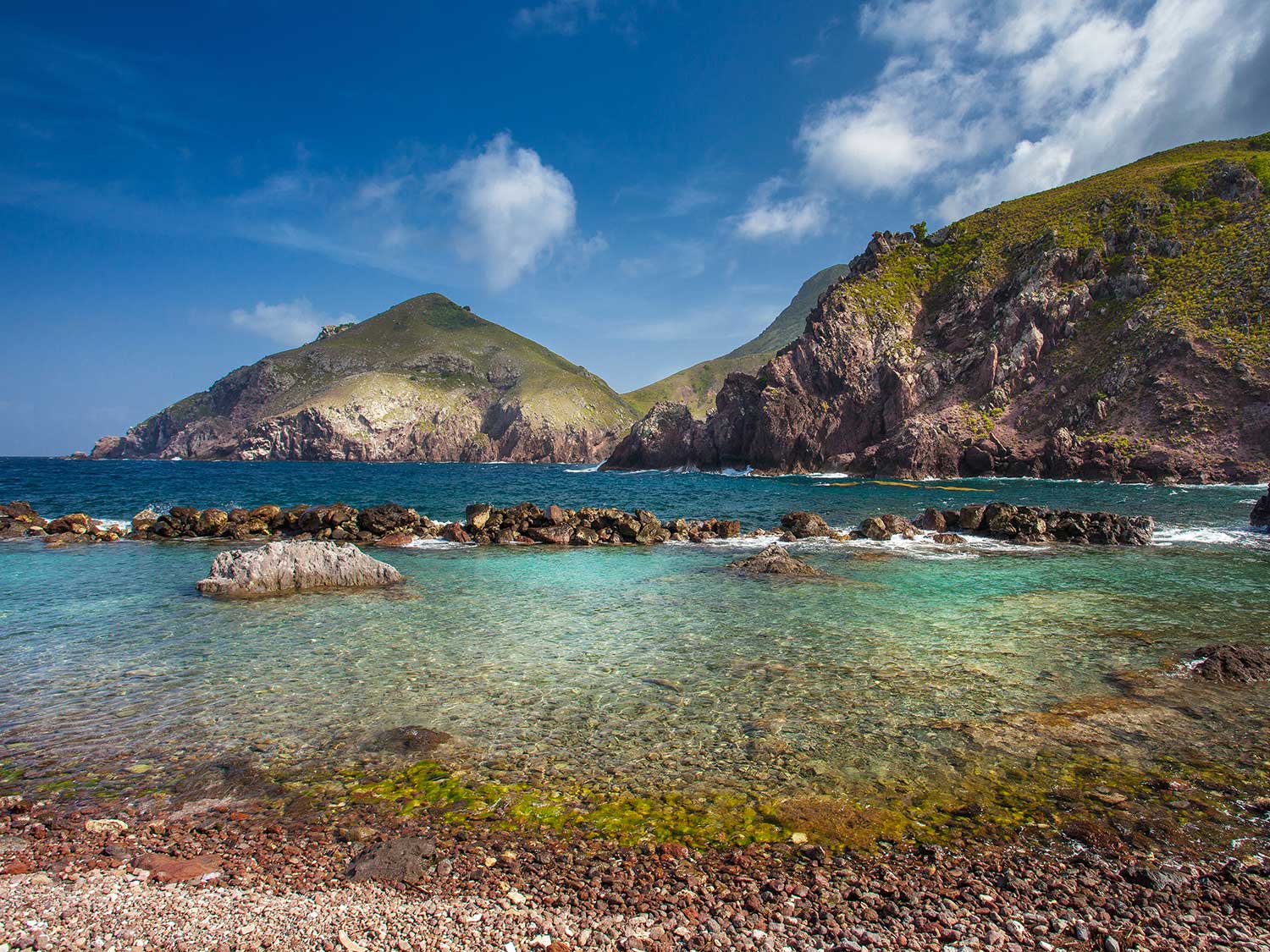
It's this guileless warmth that draws visitors (about 9,000 a year, pre-pandemic) to the island. Tourism officials aim to increase that number in coming years, but they're challenged by the fact that between its two small hotels, villas, and cottages, there are currently only 124 rooms available on Saba for overnight guests. So, for now, unless you've booked well in advance, the best way to experience the island for yourself is on a day trip from St. Maarten, a 90-minute ferry ride away.
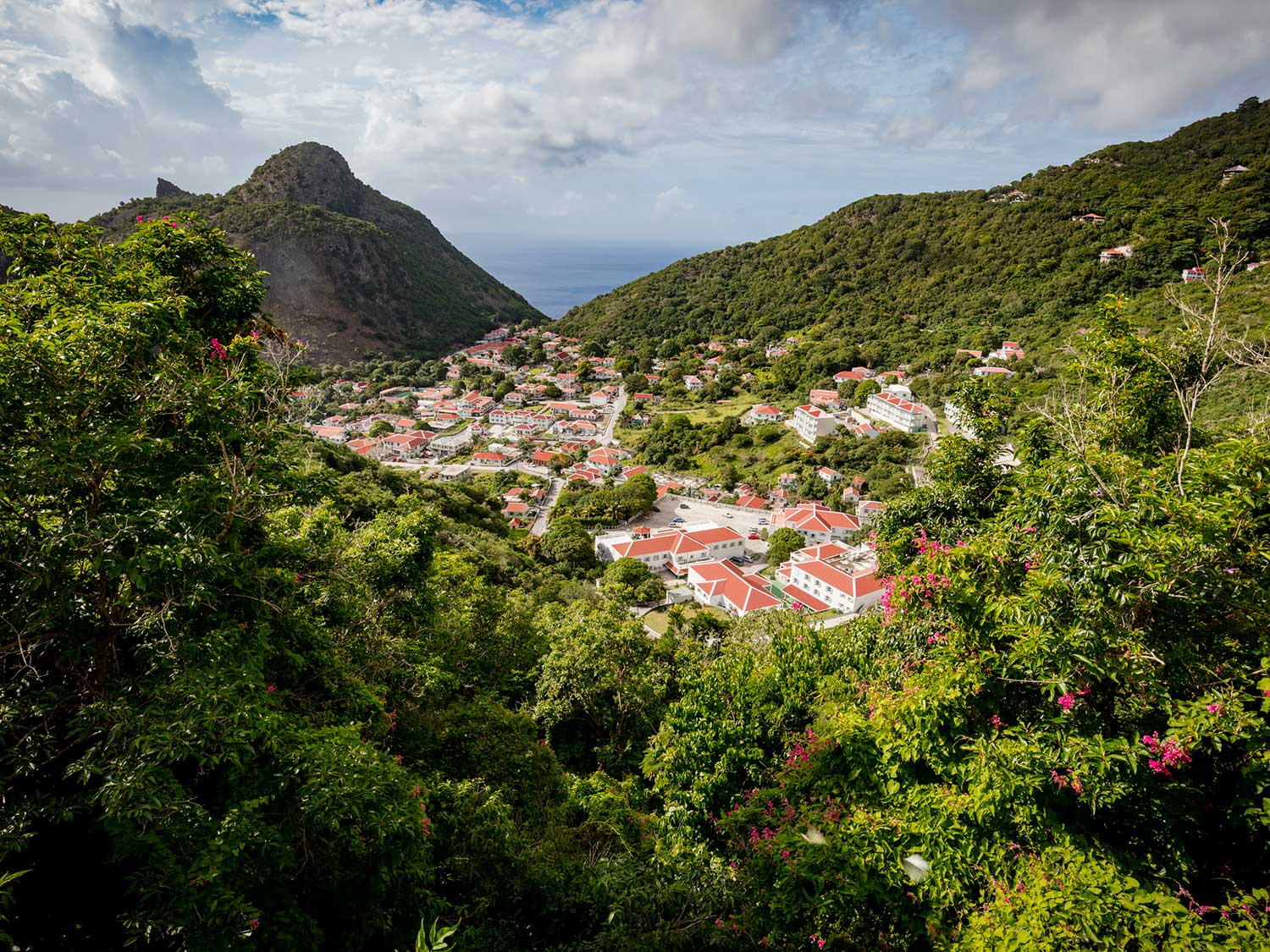
Beyond the mountainous terrain, the first thing you'll notice is the island's architecture. Almost every home speaks the same traditional vernacular: constructed of wood, painted white with forest green shutters and trim, crowned with a peaked red tin roof edged in scalloped fretwork. Surrounded by gardens ablaze with bougainvillea and Black-Eyed Susans, collectively they look like a Caribbean-ized Shire, and I half expect to see Frodo Baggins emerge through a garden gate.
With no beaches (there's a tiny black-sand one at Wells Bay, which appears only from June through October), large resorts, casinos, or duty-free shopping, Saba attracts a particular type of traveler, who comes for one or a combination of three things: hiking, diving, and relaxation.
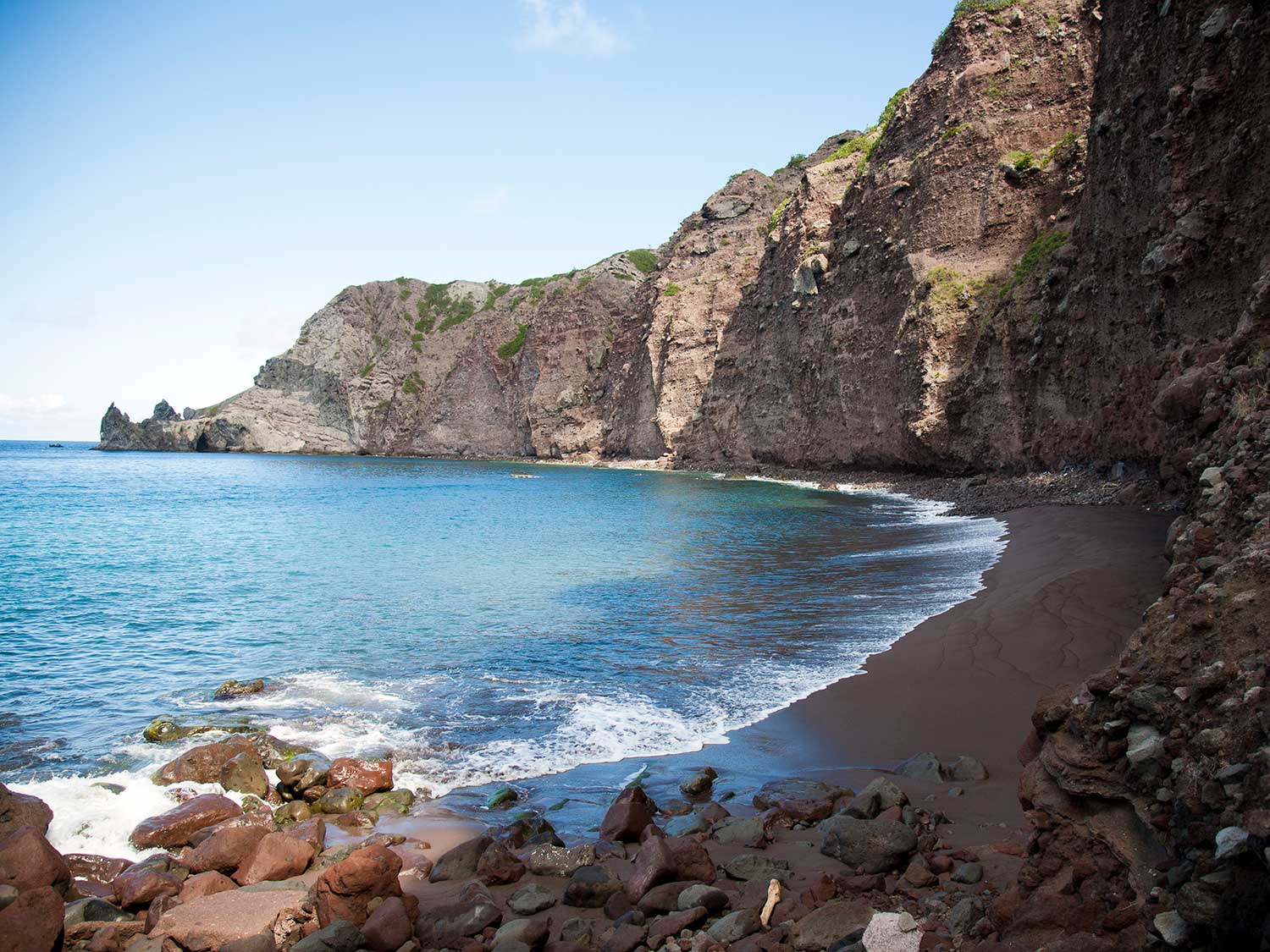
Hiking is my jam, and on a climb to Mary's Point (the island's first European settlement, dating from the 1600s) views of nearby St. Eustatius and St. Kitts are revealed, along with a bit of Saban history, geology, and ecology. My guide, James "Crocodile" Johnson—a 70-year-old who's been leading hikes since he was 14 and knows the island's 18 trails better than anyone else—leads the way. He explains that Saba has five ecosystems, ranging from desert to elfin cloud forest. The first settlers, including Mary herself, built their homes high on this craggy mountainside and led a simple, hard-scrabble life that required carrying water up and down the mountain and a constant vigilance for landslides.
I don't dive, devoting my few days instead to discovering Saba's "shopportunities," which are impressive for an island so small. I visit Jo Bean's Troy Hill glassmaking studio, where she shows me how to make a bead of Venetian glass myself. I visit the atelier of textile artist Els Mommers and fall instantly in love with her pieces, covetable combinations of quilting, painting, and embroidery. I covet the handmade gold, silver, and gemstone baubles at The Jewel Cottage, lusting over a tourmaline ring the cost of which I try—but fail—to justify to myself.
But I don't have to work at relaxing here; that comes as naturally as breathing. Saba offers so many places for quiet reflection. At the mountainside spa at Queen's Hotel, Bar and Kitchen. Over morning coffee poolside at the Haiku House villa, as you enjoy the chirps of Bananaquits and the red-roofed splendor of The Bottom below. Or simply on a stroll through the side streets of Windwardside, when in a minute the weather can morph from sunny to misty, and the clouds crowning Mt. Scenery descend to meet you, lending a chill to the air, a sheen to the leaves of tropical plants, and a dreamy scrim to the entire pastoral scene.
By the end of my short visit, it's patently clear that Saba isn't for everyone. Of the Caribbean trifecta, it has sun and sea but its missing what, for some, is the crucial S: sand. However, it's what it lacks that makes Saba so special. And what makes it different, at least to me, makes it all the more desirable.
